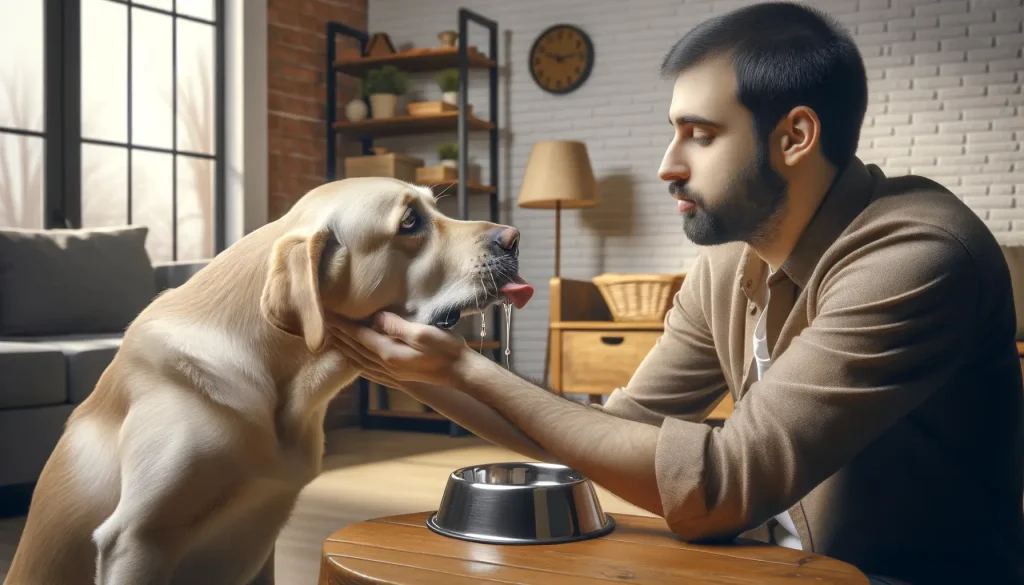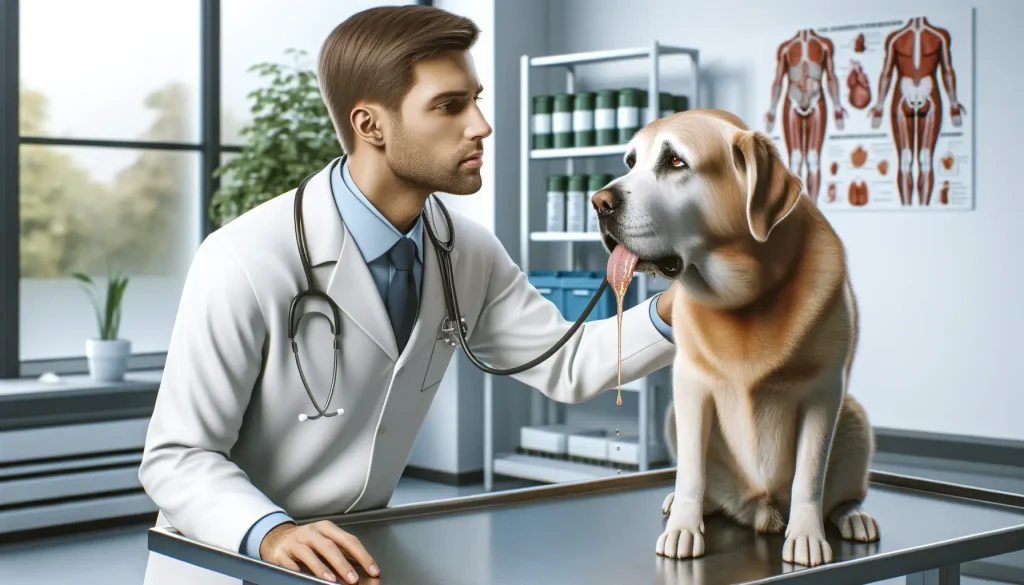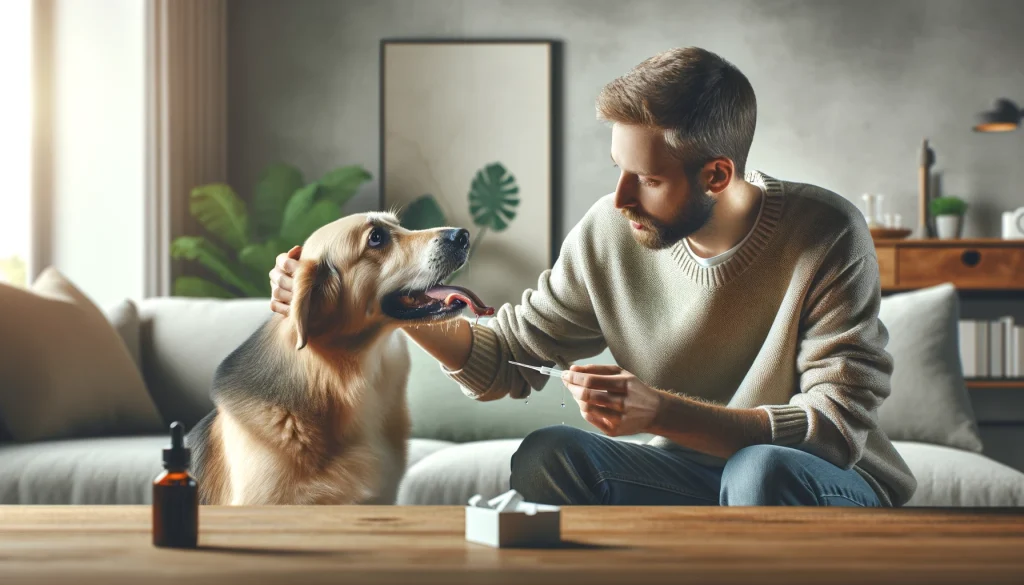
Reasons Behind Dog Foaming at the Mouth
Seeing your dog foaming at the mouth can be an alarming experience for any pet owner. This symptom, characterized by excessive, frothy drooling, often triggers immediate concern due to its potential seriousness. While rabies is a condition that famously causes foaming, it’s essential to recognize that various other, often less severe, factors can also lead to this symptom. These include the ingestion of toxic substances, dental issues, and even reactions to consuming something with a particularly bitter or foul taste. Understanding the range of causes is the first step towards addressing the issue effectively, whether it requires a simple wait-and-see approach or emergency medical intervention.
The reaction of pet owners can significantly impact the outcome for their furry friends, making it crucial to not only know why a dog might be foaming at the mouth but also what actions to take in response. But when should you be genuinely worried, and how can you discern a minor issue from a potential emergency?
Causes of Dogs Foaming at the Mouth
When you notice your dog foaming at the mouth, understanding what causes it can help you react appropriately. It’s crucial to remember that not all causes are a sign of severe illness, like rabies. Many times, the foam is a reaction to something less serious. Here’s a closer look at common reasons behind this symptom and how you should respond as a pet owner.
What Does Dog Foaming at the Mouth Look Like?
Foaming at the mouth in dogs appears as excessive, frothy drooling. This drool is typically thick and whitish, quite different from the normal, thinner saliva.
Common Causes for Foaming at the Mouth in Dogs:
- Ingestion of Toxins: Consuming toxic substances can cause foaming.
- Ingestion of Something Bitter or Foul-Tasting: Eating bitter or foul-tasting items can result in temporary foaming.
- Dental Diseases: Issues with teeth may lead to increased drooling and eventual foaming.
- Heatstroke: A serious condition that can feature foaming at the mouth among other symptoms.
- Seizures: Dogs might foam at the mouth during or after seizures.
- Nausea: If a dog feels nauseous, excessive drooling or foaming may occur.

Home Care for Dogs Foaming At the Mouth
When your dog starts foaming at the mouth, it’s crucial to act quickly but calmly. Recognizing what you can handle at home and when to seek professional help is essential. Here are practical steps to take at home.
Observation is Key
First, closely observe your dog’s behavior and physical state. Is the foaming paired with other symptoms like lethargy or confusion? These observations can help you decide the best course of action.
Check for Obvious Causes
Inspect your dog’s mouth for any visible obstructions, signs of dental diseases, or clues that they might have ingested something harmful. Sometimes, the cause of foaming is apparent and can be addressed immediately.
Rinse and Clean
If your dog has eaten something bitter or foul-tasting, gently rinsing their mouth with water can help eliminate the taste and reduce the foaming. Make sure to use a gentle flow to avoid causing stress or discomfort.
Ensure Hydration
Offer your dog fresh water. This is especially important if the foaming could be related to nausea or after consuming something unsavory. Hydration can help flush out toxins if any have been ingested.
Stay Cool
In cases where heat could be a factor, as with heatstroke, move your dog to a cool, shaded area immediately. Apply cool (not cold) water to their body, especially around the head and neck, and ensure they have adequate airflow.
Preventive Measures
- Regularly check your home and yard for potential toxins and remove any hazards.
- Maintain routine dental check-ups for your dog to prevent dental issues that could lead to foaming.
- Keep up with your dog’s vaccinations to prevent serious diseases like rabies.
Monitoring after these initial steps is crucial. If symptoms persist or worsen, or if your dog shows signs of distress, contacting your vet immediately is vital. Being proactive and informed can significantly impact your dog’s health and well-being.

When to Visit the Vet
Detecting when your dog’s foaming at the mouth is a sign of emergency can be difficult. Yet, knowing when to seek veterinary help is crucial for your dog’s health. Let’s delve into scenarios that demand a vet’s intervention.
Immediate Veterinary Attention Required
- If your dog is foaming at the mouth after ingesting toxins, don’t wait. This situation warrants urgent medical care to prevent serious health complications.
- Heatstroke is another critical condition that requires immediate veterinary care. Symptoms like excessive panting, high body temperature, and foaming indicate severe distress.
- In cases where rabies could be a concern due to symptoms like confusion, mood changes, or seizures alongside foaming, it’s imperative to seek veterinary assistance immediately. Special precautions may be necessary for such visits due to rabies’ contagious nature.
For other causes like ingestion of something bitter or foul-tasting, or if you suspect dental disease, you have a slight buffer to monitor your dog. But, if symptoms persist beyond a short period or if your dog seems distressed, it’s time to visit the vet.
Monitoring and Evaluating
- Nausea or seizures might not always require an immediate vet visit. Monitor your dog closely. Persistent or recurring symptoms signal the need for a professional evaluation.
- Regular checking and maintenance of your dog’s dental health can prevent episodes of foaming related to dental issues. Yet, sudden onset of excessive drooling or foaming mandates a vet check-up to rule out serious dental diseases.

Preventing Dogs from Foaming at the Mouth
Preventing your dog from foaming at the mouth starts with understanding and mitigating the risks associated with common causes. While not all cases can be prevented, especially those involving unforeseen illnesses, many incidents of foaming can be avoided with proactive pet care and observation. Here are valuable tips for dog owners to help prevent the occurrence of this alarming symptom.
Safe Environment Management
Creating a safe environment is crucial to prevent your dog from ingesting toxins or bitter substances. Ensure your house and yard are free from toxic plants, chemicals, and small objects that a dog might chew on and swallow. Regular checks and maintenance of your home environment can significantly reduce the risk of accidental ingestion.
Regular Dental Care
Dental health plays a significant role in preventing foaming at the mouth caused by dental diseases. Routine dental check-ups and cleanings, along with daily tooth brushing, can prevent the buildup of plaque and tartar, which may lead to serious oral health issues. Chew toys specially designed for dental hygiene can also help maintain healthy teeth and gums.
Proper Nutrition and Preventative Measures
- A well-balanced diet is key to your dog’s overall health. High-quality food appropriate for your dog’s age, size, and activity level can prevent health issues, including those that might lead to nausea or foaming.
- Regular vet visits for check-ups and vaccinations, including the rabies vaccine, are vital. They not only keep rabies at bay but also offer an opportunity to catch and address other health concerns early.
- Be cautious during hot weather to avoid heatstroke. Ensure your dog has access to shade and fresh water at all times. Limit exercise to cooler parts of the day and never leave your dog in a parked car.
Know Your Dog’s Habits
Observing and knowing your dog’s habits can help prevent issues before they occur. If your dog has a history of eating inappropriate items, supervision outdoors and training to obey commands like “leave it” are essential prevention strategies. Understanding your dog’s body language can also alert you to distress related to nausea or overheating before it escalates.
Access to Fresh Water
Ensure your dog has constant access to fresh water. Good hydration aids in digestion and helps flush toxins through the system, which might prevent incidents of foaming due to nausea or ingestion of unsuitable substances.
Beginner Guide to Raising Quail at Home
What are the Signs of a Dog Concussion?
What Causes Your Dog’s Ears to Smell Bad?
When your dog’s ears start to emit an unpleasant odor, it might leave you puzzled…
Methimazole Treatment for Cat Hyperthyroidism
Methimazole plays a crucial role in managing feline hyperthyroidism, a condition marked by an overactive…
Got Hummingbirds in your Backyard? Here’s How to Care for Them.
Why Does Your Cat Pee Outside the Litter Box?
Cat’s Litter Box Issues It’s not uncommon for cat owners to face the frustrating dilemma…




